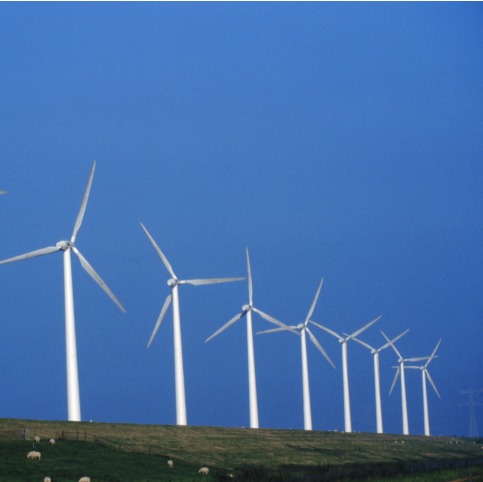 The U.S. wind energy industry is already painfully aware of the consequences stemming from a possible expiration of the production tax credit (PTC), but now the White House is re-emphasizing those ramifications.
The U.S. wind energy industry is already painfully aware of the consequences stemming from a possible expiration of the production tax credit (PTC), but now the White House is re-emphasizing those ramifications.
This week, the White House released a report from the U.S. Department of Energy (DOE) that warns of dramatic job losses that would occur next year if the PTC is not extended beyond Dec. 31.
Although the wind industry has reason to be optimistic, the report notes, the sector faces a period of great uncertainty – a fact played up by the White House as part of an effort to spur Congress to extend the PTC before the federal incentive expires at the end of the year.
The report finds that 2013 could be a year of dramatic job losses. According to a White House fact sheet, as many as 37,000 positions directly and indirectly related to the wind energy industry – roughly half the total number of people currently employed by the wind industry in the U.S. – could be eliminated if the PTC is allowed to lapse.
In a conference call, a senior administration official who spoke on the condition of anonymity said extending the PTC is ‘a top priority’ for President Obama.
And while Congress delays to act, wind industry job losses are already happening. On the same day that the White House held the conference call to discuss the report, wind turbine manufacturer Vestas announced it was laying off 3% of its workforce in the U.S. and Canada.
Recently, wind turbine component manufacturers, such as LM Wind Power, have also made job cuts attributed to PTC uncertainty.
While the White House remains hopeful that Congress will extend the PTC this year, the anonymous administration official acknowledged the difficulties that lay ahead in Congress.
Earlier this month, the Senate Finance Committee passed the Family and Business Tax Cut Certainty Act of 2012, which includes a one-year extension of the PTC, as well as a one-year extension of the investment tax credit. A full Senate vote is expected to take place in September. However, it is unlikely that the Republican-led House will take up the bill until after the November election.
‘Now is not the time to turn our backs on this industry,’ the administration official said. ‘Congress needs to act as expeditiously as possible.’
Although the Obama administration clearly supports wind energy – the White House says renewable energy generation is now double what it was in 2008 – the president's opponent, Mitt Romney, has come out against such an extension.
Industry progress
The DOE report, authored by Lawrence Berkeley National Laboratory's Ryan Wiser and Mark Bolinger, found that wind turbines are increasingly being made in the U.S. In 2011, nearly 70% of wind turbine components were produced domestically – up from 35% in 2005.
The report also corroborated several recently reported wind industry trends, such as technical advancement that allows for larger wind turbines with longer, lighter blades, as well as a movement to taller towers. In fact, the report finds that 128 turbines installed in 2011 had a hub height of 100 meters – up from just 17 turbines in 2010.
Taken in tandem, the advancements have steadily improved wind turbine performance and increased the efficiency of power generation from wind energy, the report notes.
However, policy stability at the federal and state levels is critical to the advancement of wind energy in the U.S. Many industry watchers have counted on renewable portfolio standards (RPS) – which are in place in 29 states and the District of Columbia – to sustain the wind industry in a post-PTC environment.
While RPS programs will still play a role in wind energy development, the existing mandates alone will not able to support development at the levels previously enjoyed by the wind industry, the authors warn.
According to the report, RPS programs are expected to drive roughly 4 GW to 5 GW of renewable energy generation between 2012 and 2020, but not all of that generation will be from wind power.
The authors contend that that amount is not only less than the amount of wind energy capacity added in recent years, but also ‘demonstrates the limitations of relying exclusively on state RPS programs to drive future deployment.’



